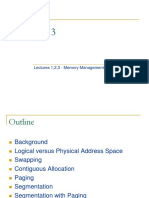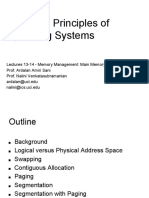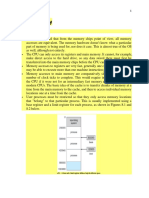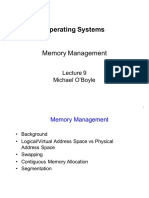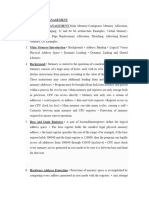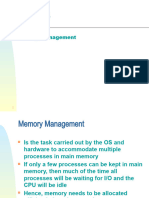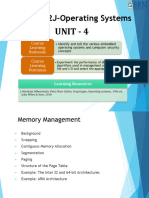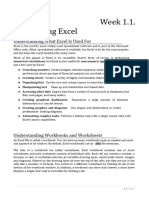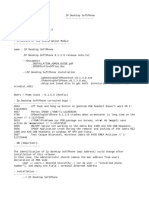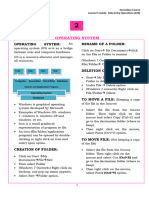0% found this document useful (0 votes)
6 views61 pagesOS Session1 U3 Notes
The document outlines various memory management techniques used in operating systems, including fixed/static and variable/dynamic partitioning, paging, and segmentation. It discusses the importance of efficient memory allocation, the challenges of fragmentation, and the role of the Memory Management Unit (MMU) in translating logical to physical addresses. Additionally, it covers dynamic linking and overlays as solutions for memory size constraints and highlights the significance of hardware support for effective memory management.
Uploaded by
utkarsh12waghCopyright
© © All Rights Reserved
We take content rights seriously. If you suspect this is your content, claim it here.
Available Formats
Download as PDF, TXT or read online on Scribd
0% found this document useful (0 votes)
6 views61 pagesOS Session1 U3 Notes
The document outlines various memory management techniques used in operating systems, including fixed/static and variable/dynamic partitioning, paging, and segmentation. It discusses the importance of efficient memory allocation, the challenges of fragmentation, and the role of the Memory Management Unit (MMU) in translating logical to physical addresses. Additionally, it covers dynamic linking and overlays as solutions for memory size constraints and highlights the significance of hardware support for effective memory management.
Uploaded by
utkarsh12waghCopyright
© © All Rights Reserved
We take content rights seriously. If you suspect this is your content, claim it here.
Available Formats
Download as PDF, TXT or read online on Scribd
/ 61


